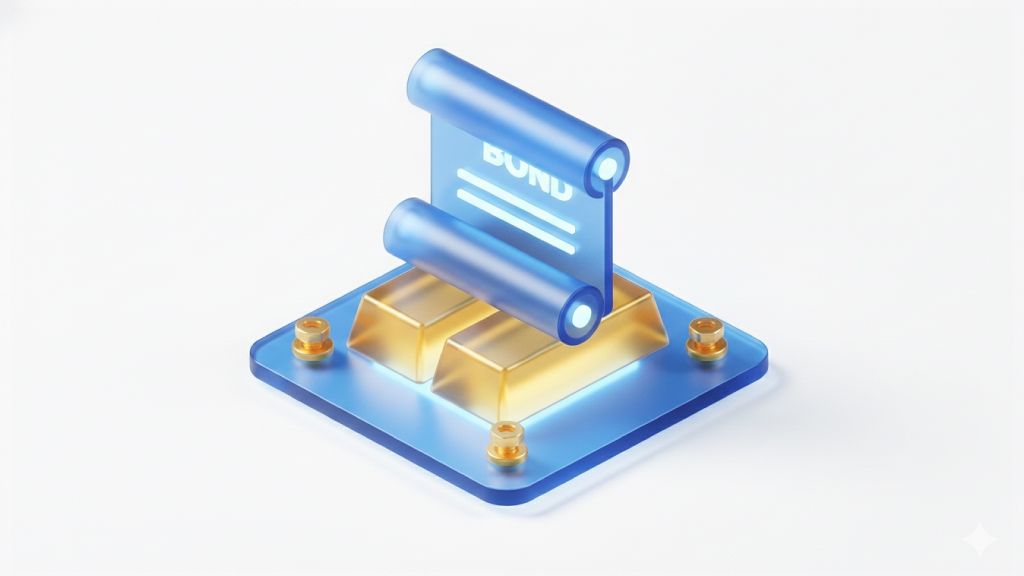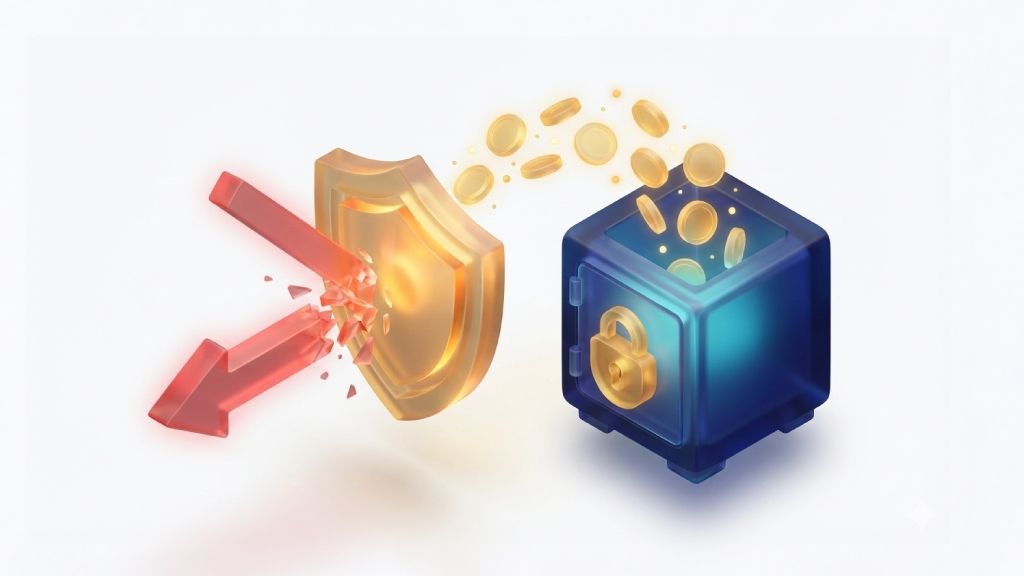IDFC Bonds – A Comprehensive Overview
10 October 2025

What Are IDFC Bonds?
Bonds have always been a preferred fixed-income instrument for investors seeking predictable returns and portfolio stability. Among the many institutions that issue or distribute bonds in India, IDFC FIRST Bank stands out as a reliable player with offerings that include infrastructure bonds, corporate bonds, and tax-saving bonds.
This article provides a detailed explanation of IDFC bonds — including their types, interest rates, redemption process, and how investors can check their bond status online.
IDFC Bonds are debt instruments issued by IDFC FIRST Bank or its associated entities to raise long-term capital for infrastructure financing, corporate funding, or other business requirements. These bonds allow investors to lend money to the issuer in return for regular interest payments and repayment of principal upon maturity.
Over the years, IDFC has issued multiple types of bonds — from infrastructure bonds that offered tax benefits to corporate bonds and NCDs (Non-Convertible Debentures) that appeal to both retail and institutional investors.
Types of IDFC Bonds
1. IDFC Infrastructure Bonds
These were among the most well-known series issued by IDFC Ltd. before the merger with IDFC FIRST Bank. Introduced under Section 80CCF of the Income Tax Act, these bonds provided tax-saving benefits to investors.
Key Features (Illustrative):
Issuer: IDFC Ltd. (now IDFC FIRST Bank)
Purpose: To raise capital for infrastructure development projects
Tenure: Typically 10 years, with a lock-in of 5 years
Interest Rate: Around 7.5% to 8.5% per annum at the time of issue
Tax Benefit: Deduction of up to ₹20,000 under Section 80CCF (for earlier issues)
Tradability: Post lock-in, bonds were tradable on exchanges
While these tax-saving benefits no longer apply to new issues, investors holding legacy IDFC infrastructure bonds can still redeem or track them through IDFC FIRST Bank channels.
2. IDFC Corporate Bonds and NCDs
IDFC FIRST Bank periodically issues Non-Convertible Debentures (NCDs) to raise funds. These bonds are fixed-income securities that offer investors periodic interest payments.
Key Features (Illustrative):
Issuer: IDFC FIRST Bank or IDFC entities
Credit Rating: Generally AA or higher, reflecting strong financial stability
Interest Rate: Typically ranges from 7.75% to 8.75% per annum (varies by issue and market conditions)
Tenure: Between 3 to 10 years
Listing: Usually listed on NSE or BSE for liquidity
Interest Payment: Annual, semi-annual, or cumulative options
These bonds cater to investors seeking consistent income with moderate risk exposure.
IDFC Bonds Interest Rate
The interest rate on IDFC bonds depends on the type of bond and the prevailing market conditions at the time of issue.
Indicative Range (for reference):
Corporate Bonds/NCDs: 7.75% to 8.75% per annum
Legacy Infrastructure Bonds: 7.5% to 8.5% per annum (for older issues)
The rates are subject to change and vary based on RBI policy updates, credit ratings, and bond tenure. Investors should check IDFC FIRST Bank’s official website for the latest information on new issues and returns.
How to Check IDFC Bond Status
Investors can verify the status of their IDFC bonds through the following methods:
1. Visit the IDFC FIRST Bank Investor Relations Portal:
Go to https://www.idfcfirstbank.com/investors and navigate to the “Bonds” or “Infra Bonds” section.
2. Check Through Registrar and Transfer Agents (RTA):
Bondholders can check bond holdings, maturity dates, and payment details via the RTA website such as KFin Technologies or Link Intime India Pvt Ltd, depending on the bond series.
3. Demat Account View:
For bonds held in electronic form, investors can check status and transaction history directly through their demat account or trading platform.
IDFC Bonds Redemption Process
1. Redemption on Maturity
Upon maturity, the redemption proceeds are automatically credited to the investor’s registered bank account. Investors holding bonds in demat form do not need to take any additional action.
2. Premature Redemption (If Applicable)
Some IDFC bonds, especially infrastructure bonds, had a 5-year lock-in period after which investors could opt for early redemption. Redemption could be done through:
Submission of a redemption request form to the registrar (for physical bonds).
Online redemption through IDFC FIRST Bank’s investor portal (if available).
Note: Early redemption rules depend on the specific bond series. Investors should verify terms in the offer document.
3. Online Redemption Steps (Illustrative)
For investors looking to redeem IDFC bonds online:
Visit the IDFC FIRST Bank investor portal.
Go to the “Infra Bonds” or “Bond Redemption” section.
Enter the folio number or PAN details.
Follow the on-screen instructions for redemption or maturity status.
IDFC Bonds Price and Trading
IDFC corporate bonds and listed NCDs can be bought and sold on stock exchanges like NSE and BSE. The market price depends on:
Prevailing interest rates
Remaining tenure to maturity
Credit rating and liquidity
When interest rates in the broader market rise, bond prices tend to fall and vice versa. Therefore, understanding the price-yield relationship is crucial for secondary market investors.
Risks Associated with IDFC Bonds
While IDFC bonds are considered relatively stable, they are not completely risk-free. Investors should be aware of potential risks:
Interest Rate Risk: Bond prices may decline if market interest rates rise.
Credit Risk: While IDFC has strong ratings, any downgrade could affect bond value.
Liquidity Risk: Some series may have limited trading volumes on exchanges.
Taxation: Interest income from bonds is taxable as per the investor’s income slab.
Hence, bonds should be chosen based on individual financial goals and risk appetite.
FAQs
1. What is the current interest rate on IDFC bonds?
Interest rates vary by bond type and issue date, typically between 7.75% and 8.75% per annum for corporate bonds.
2. How can I check my IDFC bond status online?
You can check your bond status through the IDFC FIRST Bank investor portal or via the registrar’s (RTA) website by using your PAN or folio number.
3. How do I redeem my IDFC infrastructure bonds?
You can redeem eligible bonds after the lock-in period either online through IDFC FIRST Bank’s portal or by submitting a physical redemption request to the registrar.
4. Are IDFC bonds safe?
IDFC bonds generally have strong credit ratings, but like any debt instrument, they are subject to market and credit risk.
5. What are IDFC infrastructure bonds?
These were long-term bonds issued by IDFC under Section 80CCF, offering tax benefits and financing infrastructure projects.
Conclusion
IDFC bonds represent a trusted fixed-income avenue for investors looking to balance safety and returns. From corporate bonds to legacy infrastructure issues, IDFC has contributed significantly to India’s bond market evolution.
However, investors must understand bond features, interest rate dynamics, and redemption procedures before investing or redeeming their holdings.
Disclaimer
This blog is intended solely for educational and informational purposes. The bonds and securities mentioned herein are illustrative examples and should not be construed as investment advice or personal recommendations. BondScanner, as a SEBI-registered Online Bond Platform Provider (OBPP), does not provide personalized investment advice through this content.
Readers are advised to independently evaluate investment options and seek professional guidance before making financial decisions. Investments in bonds and other securities are subject to market risks, including the possible loss of principal. Please read all offer documents and risk disclosures carefully before investing.
Recent Blogs

Covered Bonds & Senior Secured Bonds Explained
An educational guide explaining covered bonds, senior secured bonds, what secured bonds mean, and how these instruments function in India’s bond market.
19 Dec 2025

Guide to Capital Gain Bonds (54EC) & Alternatives
An educational guide explaining capital gain bonds under Section 54EC, issuer options like PFC and SBI, eligibility rules, and alternatives for reinvesting sale proceeds.
19 Dec 2025

Bond ETFs in India: How They Work & When to Use Them
An educational guide explaining bond ETFs in India, their structure, returns, risks, and how products like Bharat Bond ETF and corporate bond ETFs function.
19 Dec 2025